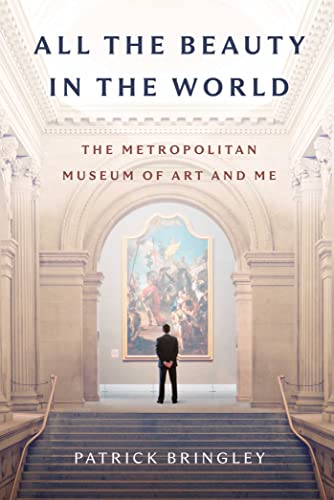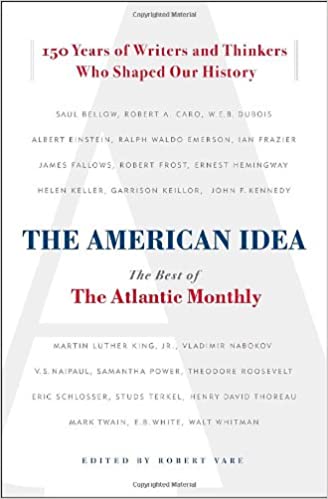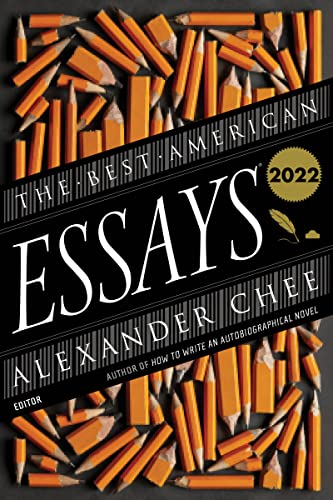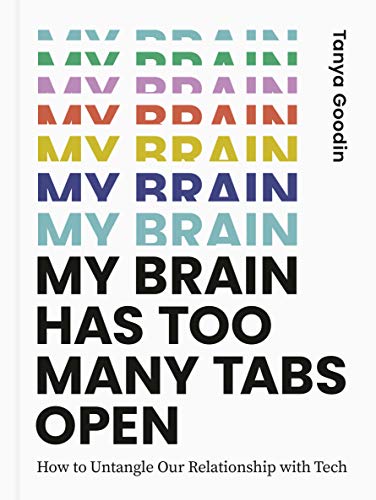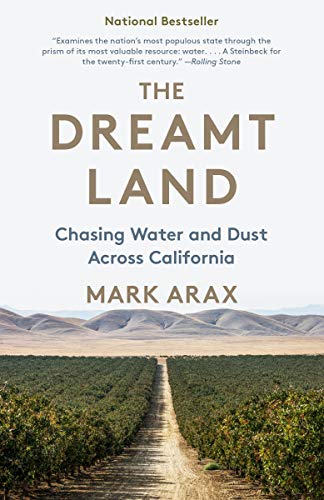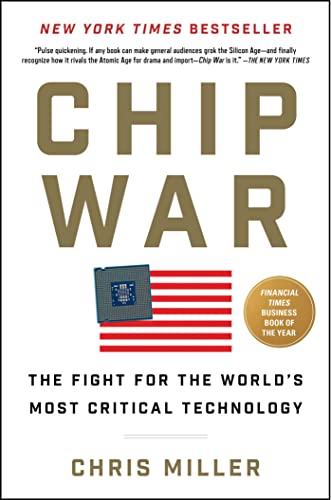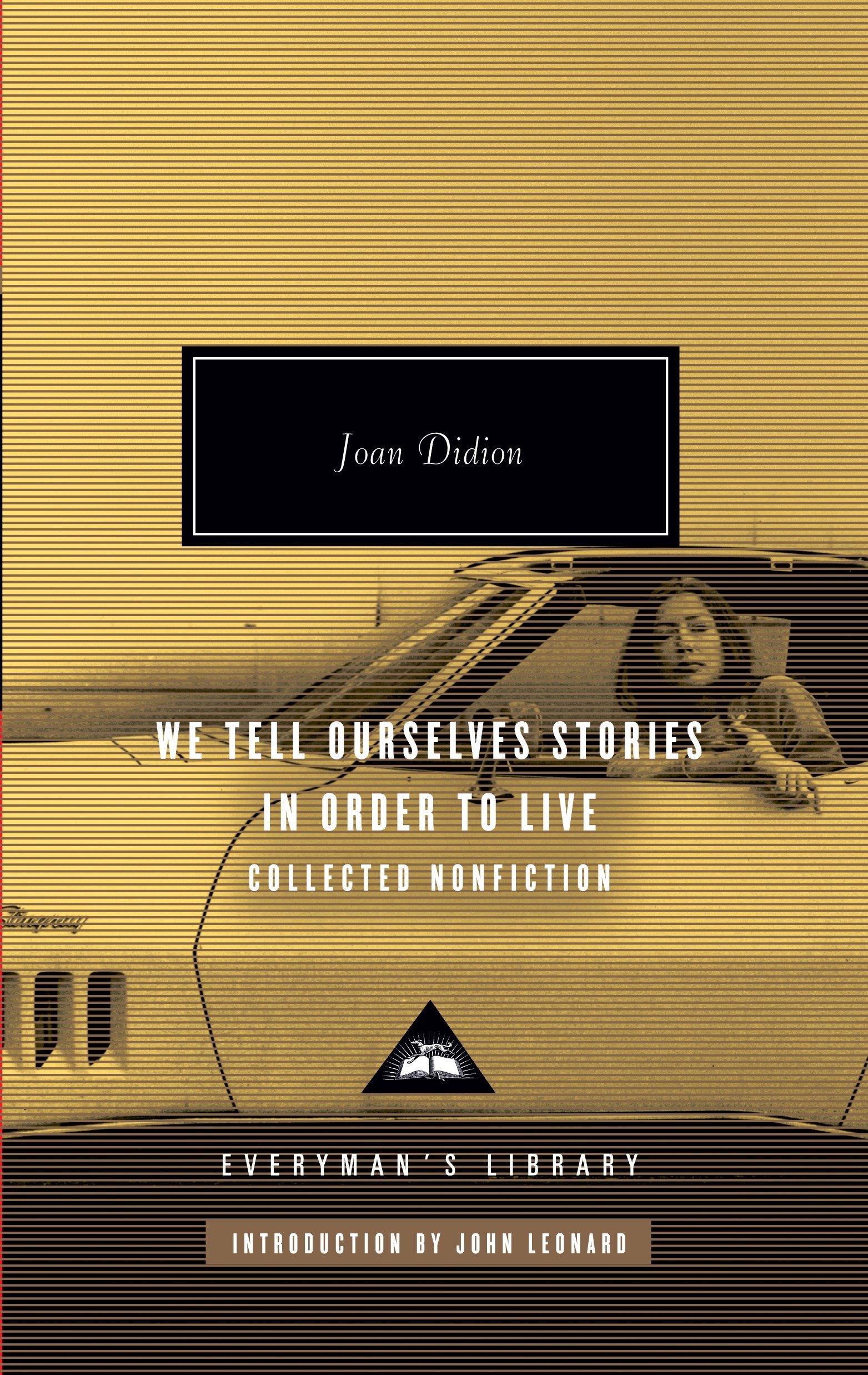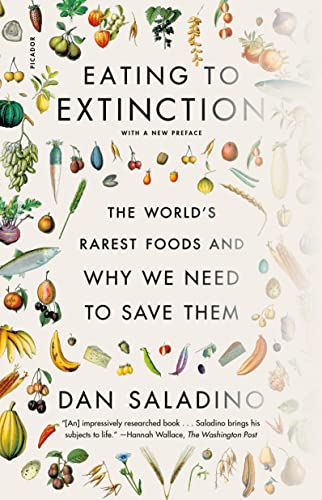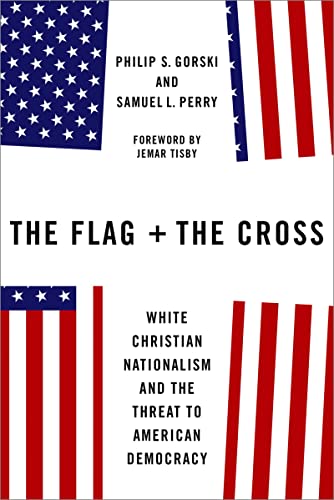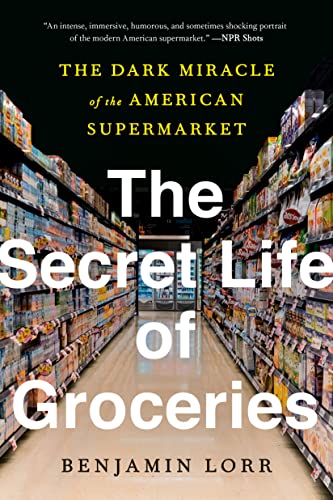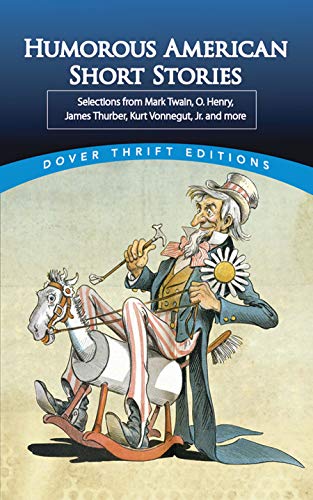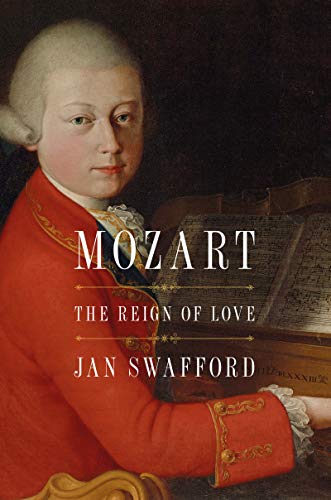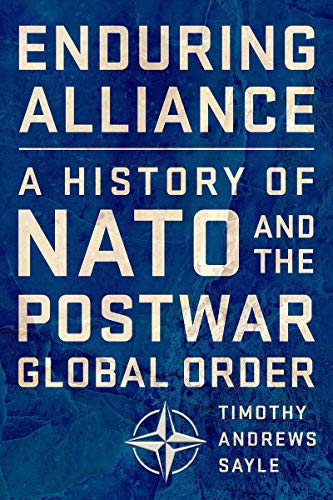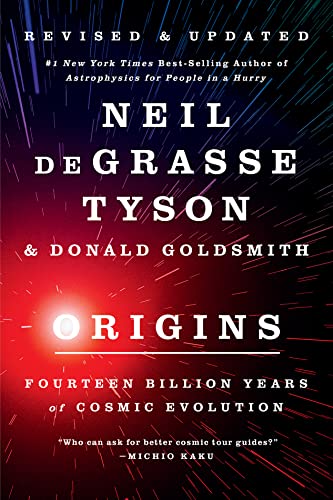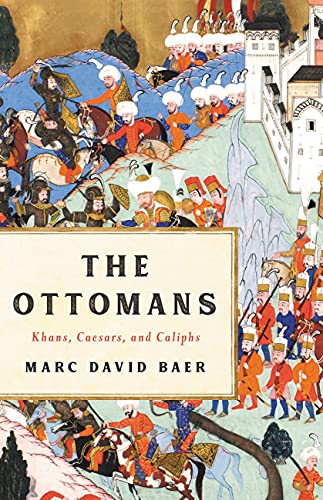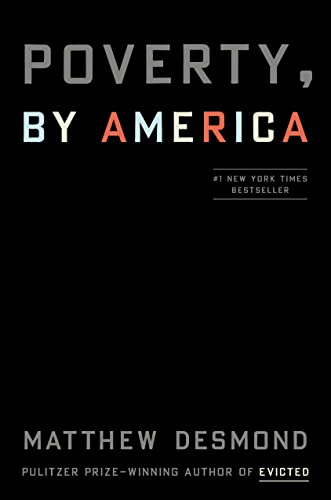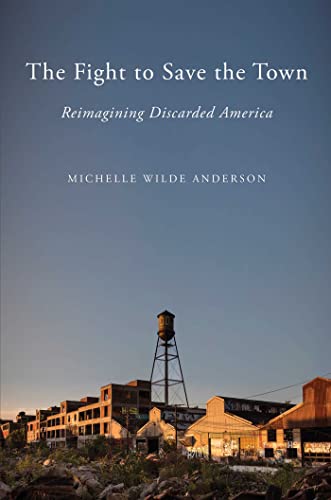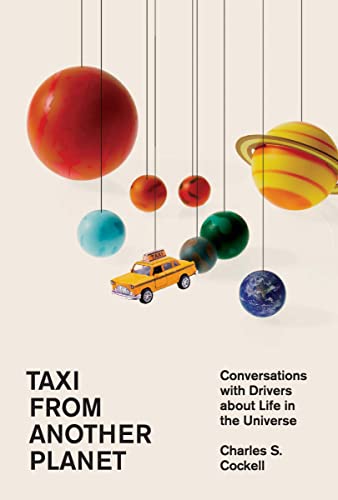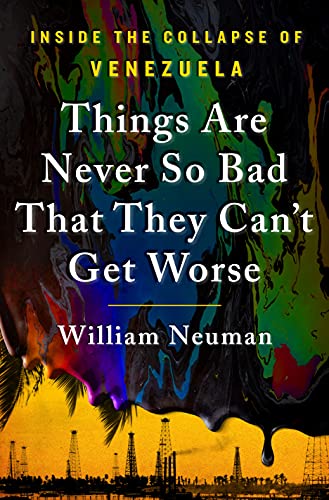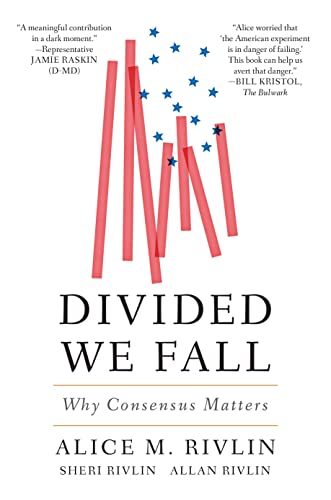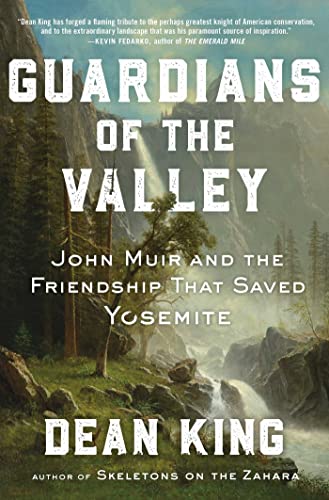
COURSES
(SDGs) OFFERED FOR Fall 2023
Classes
start Sep. 1st and
end Dec. 29th.
Each S/DG
may choose to adjust its schedule to account for holidays.
Scroll
down past this page to view all 25 Course (SDG)
descriptions, or click any ID/Name below to view a specific
one:
(SDGs with insufficient
enrollment to be scheduled are struck-through
and unbolded)
CLICK ON ANY BOOK COVER OR TITLE TO VIEW AMAZON'S OFFERINGS
|
|
|
|
|
|
|
1. (AMW) GREAT ART MUSEUMS OF THE WORLD |
|
Common Reading: All the Beauty in the World: The Metropolitan Museum of Art and Me, by Patrick Bringley (February 2023; 239 pages) |
|
For
the last three years, many Omniloreans have longed for
more beauty in their lives and the ability to travel
worldwide again.
What better time to have an S/DG that focuses
on art museums? Our common reading is not a traditional art book
but rather a fascinating, revelatory portrait of the
Metropolitan Museum of Art and its treasures by a
former New Yorker staffer who spent a decade
as a museum guard.
It will serve as the basis for many
interesting discussions. Presentations can be on any art museum in the world (other than the Met) of the presenter’s choice: one with which the presenter is intimately familiar or one that they want to know more about. Presentations can include the history of the museum, its architecture, and/or some of its famous (or not-so-famous) holdings. Well-known local examples are LACMA, The Broad, The Getty, and the Getty Villa. Other U.S. Museums are MOMA (Museum of Modern Art in NY), the Chicago Art Institute, and the National Gallery. Well-known foreign examples are The Louvre, The British Museum, The Uffizi, and The Hermitage. There are also thousands of less well-known museums from which to choose. |
|
|
|
|
|
|
|
|
|
|
2. (ATL) AMERICAN HISTORY VIA THE ATLANTIC MONTHLY |
|
|
|
|
The Atlantic Monthly was founded in 1857 by a group that included some of the towering figures of 19th Century intellectual life, including Ralph Waldo Emerson, Oliver Wendell Holmes and Henry Wadsworth Longfellow. Throughout the magazine’s history, contributors have confronted the fundamental experiences of the American experience: war and peace, science and religion, the conundrum of race, the role of women, the plight of the cities, the struggle to preserve the environment, the strengths and failings of our politics and, especially America’s proper place in the world. The book of articles was published in 2007, the 150 year anniversary of the magazine’s founding. The proposed format of the class is similar to other “best of” S/DGs, where each member chooses an article and then expands on the subject. Presentations can be made on any of the topics covered by the articles in the book, possibly incorporating present-day articles from The Atlantic. The strength of this type of S/DG (attested to by many) is that one learns about a variety of subjects, previously unexplored. Some of the contributing writers are Saul Bellow, Robert A. Caro, W.E.B. DuBois, James Fallows, Garrison Keillor, Helen Keller, Ernest Hemingway, JFK, MLK, jr., Robert Frost, Studs Terkel and some other familiar and not so familiar names; from this list one can easily assume the diversity of subjects. Articles are grouped into categories and come from the entire 150-year existence of the magazine up until the publication of the collection. |
|
|
|
|
|
|
|
|
|
|
3. (BAE) THE BEST AMERICAN ESSAYS 2022 |
|
|
Common Reading: The Best American Essays 2022, by Alexander Chee (November 2022) |
|
Essays are about mulling life over in a very personal way, leading one to think of one’s own life and ways in which it might be, well, similar. Montaigne is credited in creating the form. But although he might have said that the more things change, the more they are the same, most of us are not 16th century aristocrats, and might prefer to look at essayists from this century. Or even last year.
Alexander Chee, an essayist of “virtuosity and
power” (Washington Post), selects twenty
essays that represent the best examples of the form
published the previous year. |
|
|
|
|
|
|
|
|
|
|
4. (BRN) MY BRAIN HAS TOO MANY TABS OPEN |
|
|
|
Digital detox expert Tanya Goodin explores the cost that our digital life inflicts on us and offers a guide for anyone who has lost their way. Learn how to recognize and label harmful habits– both yours and others and then find answers in the guides. My Brain Has Too Many Tabs Open is your key to FINDING BALANCE --digital balance. Complete with diagnostic guides and a declaration for improved digital citizenship, this habit-improving book offers such conversation-starting vocabulary as “Doomscrolling, Vampire Shoppers, and Clicktivism.” We desperately need to understand and untangle our relationship with technology for a more humane world. Author: Tanya Goodin is a Fellow of the Royal Society of Arts, and a graduate of Oxford University. She was a founder member of the Digital Wellness Institute, a global think-tank that advocates for research and policy on the healthy use of tech. Twice
a finalist for the Entrepreneur of the Year award,
and for the Blackberry Outstanding Women in
Technology award, Tanya was inspired to set up Time
To Log Off after a 20+ year career working
exclusively in the online world. Research
and evidence soon began to emerge supporting her
belief that she was not alone in suffering from the
adverse effects of a screen-dominated life. Possible presentations: 1 What the book’s guidebooks say about the healthy use of technology as compared to the reality of today’s technology trends. 2 Write the most annoying things about learning new technology; compare this personal anecdote with how Gen Z responds to new learning. 3 Research some of the new vocabulary from this book. |
|
|
|
|
|
|
|
|
|
|
|
5. (CAW) CALIFORNIA WATER |
|
|
|
“When delegates to the second International Irrigation Congress convened in Los Angeles in October 1893, pessimism about their mission was not supposed to be on the agenda. The gathering, after all, was meant to encourage reclamation of arid lands throughout the American West, using irrigation to transform an immense wasteland into an agriculturally productive cornucopia. Thus, the reaction when John Wesley Powell rose and delivered his now-famous caveat about the limits of development in the region. ‘Gentlemen,’ he told the delegates in the Grand Opera House, ‘there is not sufficient water to supply these lands.’ The gentlemen responded by booing the esteemed explorer off the stage…” (New York Times) Mark Arax, the author of the text on California water, is from a family of Central Valley farmers. He is a writer with deep ties to the land, and has watched the many battles over water as California jumps from drought to flood and back again. In The Dreamt Land, he travels the state to explore the one-of-a-kind distribution system, built in the 1940s, 50s and 60s, that is today straining to keep up with California’s relentless growth. Since the beginning, Californians, from gold miners, to wheat farmers, to small fruit farmers, to today’s “Big Ag,” have redirected rivers, drilled ever-deeper wells and built higher dams, pushing the water supply past its limit. The book weaves reportage, history and memoir. There are farmers’ stories, politics, and imported workers; drought turns to flood and back again, and all is consistently forgotten as agriculture continues to grow and developers continue to build. Each of these topics can become a presentation, as can anything about the Colorado River, first rights to the water, present day worries about flooding from the heavy snowfall, almond growing, climate issues in general and possible solutions. One could even go beyond California and present on other drought-plagued states or on something like Israel’s conversion of saltwater for drinking. According to bookbrowse.com, The Dreamt Land is “a vivid, searching journey into California’s capture of water and soil—an epic story of a people’s defiance of nature and the wonders, and ruin, it has wrought. |
|
|
|
|
|
|
|
|
|
|
|
6. (CHP) CHIP WAR: THE FIGHT FOR THE WORLD’S MOST CRITICAL TECHNOLOGY |
|
|
|
|
You may be surprised to learn that microchips are the new oil—the scarce resource on which the modern world depends. Today, military, economic, and geopolitical power are built on a foundation of computer chips. Virtually everything—from missiles to microwaves, smartphones to the stock market—runs on chips. Until recently, America designed and built the fastest chips and maintained its lead as the #1 superpower. Now, America's edge is slipping, undermined by competitors in Taiwan, Korea, Europe, and, above all, China. Today China, which spends more money each year importing chips than it spends importing oil, is pouring billions into a chip-building initiative to catch up to the U.S. At stake is America's military superiority and economic prosperity. This S/DG will examine how the semiconductor came to play a critical role in modern life and how the U.S. became dominant in chip design and manufacturing and applied this technology to military systems. America’s victory in the Cold War and its global military dominance stems from its ability to harness computing power more effectively than any other power. But here, too, China is catching up, with its chip-building ambitions and military modernization going hand in hand. America has let key components of the chip-building process slip out of its grasp, contributing not only to a worldwide chip shortage but also a new Cold War with a superpower adversary that is desperate to bridge the gap. Possible presentation topics: How a chip
manufacturing plant is built Effects of
the chip shortage during Covid A closer look at
one of the computer chip pioneers (company or
individual) How improvements in chip size and speed changed a particular field (e.g., medicine) How the US uses diplomacy to influence international trade |
|
|
|
|
|
|
|
|
|
|
7. (DID) JOAN DIDION GEMS: SELECTED NONFICTION FROM A LITERARY ICON (This is a Literary Salon Choice) |
|
|
|
|
Joan Didion is
considered one of the pioneers of New
Journalism along with Gay
Talese, Hunter
S. Thompson, and Tom
Wolfe. Didion’s incomparable essays and
journalism are admired for their acute, incisive
observations and their spare, elegant style. Her seven
books of nonfiction that appeared between 1968 and
2003 are brought together in one thrilling collection
within the suggested core text for this S/DG, We
Tell Ourselves Stories in Order to Live: Collected
Nonfiction. Slouching Towards Bethlehem captures the counterculture of the 60s, its mood and lifestyle. The White Album covers the revolutionary politics and the “contemporary wasteland” of the late 60s and early 70s. Salvador is a riveting look at the social and political landscape of civil war. Miami exposes the secret role this city played in the Cold War, from the Bay of Pigs through Watergate. In After Henry Didion reports on the Reagans, Patty Hearst, and the Central Park jogger case. The eight essays in Political Fictions - on censorship in the media, Gingrich, Clinton, Starr, and “compassionate conservatism” - show us how we got to the political scene of today. And in Where I Was From, Didion shows that California was never the land of the Golden Dream. The format will be
similar to recent Literary Salon S/DGs. The class will
select three or four of Didion’s works from this
compilation of literary gems to read and discuss. The S/DG
members may also consider reading one of her memoirs,
The Year of Magical Thinking, for which she was
a finalist for a Pulitzer Prize in 2005, or one of her
novels. Note: In keeping with this format, each of this S/DG’s members will write discussion questions and lead a discussion on a portion of one of the author’s chosen works, and do a presentation that is independent of the core reading. Possible
presentation topics: Biographical
background and influences, Didion’s married life and
work with writer John Gregory Dunne, the couple’s year
they lived in Portuguese Bend, the Netflix Didion
documentary The Center Will Not Hold, analysis
and commentary on any of the other titles in the core
text, or one of Didion’s novels, or one of her
screenplays, such as The Panic in Needle Park
or Play It As It Lays. |
|
|
|
|
|
|
|
|
|
|
8. (DOC) DOCUMENTARY MOVIES |
|
|
No
Common Reading. |
|
Not long ago, if you wanted to see a documentary film, you had to take a course, go to a movie festival, or catch it on PBS. Nowadays we can find documentaries on our TVs through the magic of the Internet, Netflix and other online sources or from our libraries. While your basic Hollywood studio movie is primarily made to make money, a documentary is the expression of its creator's personal passion. This S/DG will explore the world of modern masters of the documentary. Presenters will choose a film that class members can view at home before each class session, and then present for discussion whatever facets of the film they choose – the contents or subject, the techniques, the background, the director’s focus on the subject, and its effect on public opinion. Many Omnilorians after taking this class have been amazed at the diversity of what is available and how many of these films are unexpectedly enriching. |
|
|
|
|
|
|
|
|
|
|
9. (EAT) EATING TO EXTINCTION |
|
|
|
Over the past several decades, globalization has homogenized what we eat, and done so ruthlessly. The numbers are stark: Of the roughly six thousand different plants once consumed by human beings, only nine remain major staples today. Just three of these—rice, wheat, and corn—now provide fifty percent of all our calories. Dig deeper and the trends are more worrisome still. The source of much of the world’s food—seeds—is mostly in the control of just four corporations. Ninety-five percent of milk consumed in the United States comes from a single breed of cow. Half of all the world’s cheese is made with bacteria or enzymes made by one company. And one in four beers drunk around the world is the product of one brewer. If it strikes you that everything is starting to taste the same wherever you are in the world, you’re by no means alone. This matters, because when we lose diversity and foods become endangered, we not only risk the loss of traditional foodways, but also of flavors, smells, and textures that may never be experienced again. And the consolidation of our food has other steep costs, including a lack of resilience in the face of climate change, pests, and parasites. Our food monoculture is a threat to our health—and to the planet. In our common reading, BBC food journalist Dan Saladino travels the world to experience and document our most at-risk foods before it’s too late. He tells the fascinating stories of the people who continue to cultivate, forage, hunt, cook, and consume what the rest of us have forgotten or didn’t even know existed. The individuals profiled in Eating to Extinction are essential guides to treasured foods that have endured in the face of rampant sameness and standardization. They also provide a roadmap to a food system that is healthier, more robust, and, above all, richer in flavor and meaning. Presentations can expand on any of the foods mentioned in the common reading or discuss the role that governments play in this process or implications for healthy eating and longevity. The group might even decide to sample these delicacies. |
|
|
|
|
|
|
|
|
|
|
|
10. (FAC) THE FLAG AND THE CROSS |
|
|
Common
Reading: The Flag and the
Cross: White Christian Nationalism and the Threat to American Democracy, by Philip Gorski and Samuel Perry (April 2022; 176 pages) |
|
The separation of church and state is an American tradition that is under attack by white Christian nationalists who openly advocate for restrictions on racial, ethnic, and religious diversity. In Dallas last August, the Conservative Political Action Conference welcomed autocrat Victor Orban to explain how he is fighting to keep Hungary from committing cultural suicide by strangling a free press and eroding democratic institutions. Our text is The Flag and the Cross: White Christian Nationalism and the Threat to American Democracy by Philip Gorski and Samuel Perry, 2022. It defines this ideology, traces its history in the U.S., and explains why it is a threat to democracy. Potential presentation topics include: profiles of Hungary, Russia and other countries where white Christian nationalism is spreading or already solidly entrenched; American politicians who have found this to be a vote-winning ideology; and whether the U.S. Supreme Court in its current composition is poised to facilitate the white Christian nationalist movement. |
|
|
|
|
|
|
|
|
|
|
11. (GRC) THE SECRET LIFE OF GROCERIES |
|
|
|
The average grocery store stocks 32,000 distinct products. Browsing the aisles consumes 2% of our lives. What does it take to run an American grocery store? How do products get to shelves? Who sets the price? And what are the consequences of increased convenience and efficiency? In The Secret Life of Groceries, author Benjamin Lorr explores these issues and more: the secrets of Trader Joe’s success, from Trader Joe; why truckers call their job “sharecropping on wheels”; what it takes for a product to earn the labels “organic” and “fair trade”; the struggles entrepreneurs face as they fight for shelf space, and alarming practices in some food industries. The Secret Life of Groceries is the product of five years of research and hundreds of interviews across every level of the industry. Potential presentation topics could expand on any topic in the book, supply chains, supermarkets and food industries not covered in the book, food safety, animal handling and labor practices and environmental issues not covered in the book and more. |
|
|
|
|
|
|
|
|
|
|
|
|
12. (HSS) HUMOROUS AMERICAN SHORT STORIES |
|
|
This S/DG will span nearly 300 years of American humor, with an anthology of entertaining tales ranging from the inventive mind of Benjamin Franklin and his 1732 story, Alice Addertongue, to Simon Rich’s 2012 fable, Center of the Universe. More than 30 witty short stories include works by Mark Twain, Harriet Beecher Stowe, O. Henry, Langston Hughes, and other masters of the genre. Nineteenth-century stories include Washington Irving’s classic, Rip Van Winkle: A Posthumous Tale of Diedrich Knickerbocker, A Jersey Centenarian by Bret Harte, and Lucretia P. Hale’s The Peterkins Decide to Learn the Languages. From later eras come Ring Lardner’s The Golden Honeymoon, A Telephone Call by Dorothy Parker, The Secret Life of Walter Mitty by James Thurber, Philip Roth’s The Conversion of the Jews, and Harrison Bergeron by Kurt Vonnegut, Jr. Presentation topics include: picking two short stories and going into depth on the authors. |
|
|
|
|
|
|
|
|
|
|
|
13. (MAL) MESSAGES AND LIFE IN SIMPLE DRAWINGS |
|
|
No Common Reading - The full list can be seen at: Category: Reuben Award Winners - Wikipedia |
|
The National Cartoonists Society (NCS) is an organization of professional cartoonists in the United States. It presents the National Cartoonists Society Awards. The Society was born in 1946 when groups of cartoonists got together to entertain the troops. The society's greatest honor, the Reuben Award, is presented to the Outstanding Cartoonist of the Year. Cartoonists in various professional divisions are also honored with special plaques for excellence in the fields of newspaper strips, TV animation, gag cartoons, comic books and more. The award was previously called the Billy DeBeck Memorial Award, and the recipient received an engraved silver cigarette box. The Reuben was introduced in 1954 and is named after longtime Honorary President Rube Goldberg. Sixty-three Reubens have been awarded. Some of the winners had/have controversy in their lives. A few names include: · Scott Adams – Dilbert (recently removed from many papers after Adams’ segregationist rant on YouTube) · Al Capp – Li’l Abner · Mort Drucker – (Mad Magazine) · Rube Goldberg (crazy-elaborate imaginary mechanical contraptions) · Matt Groening – (The Simpsons) · Cathy Guisewhite – Cathy · Johnny Hart – The Wizard of Id; BC · Herblock – (editorial cartoon panels) · Al Jaffee – (Mad Magazine fold-ins) · Walt Kelly – Pogo · Hank Ketcham – Dennis the Menace · Gary Larson – The Far Side · Bill Mauldin – (WWII panels featuring soldiers Willie and Joe) · Pat Oliphant – (political, cultural and corruption) · Dan Piraro – Bizarro · Charles M. Schulz – Peanuts · Gary Trudeau – Doonesbury · Mort Walker – Beetle Bailey · Bill Watterson – Calvin and Hobbes · Chic Young – Blondie There will be no class book. Class members make two presentations at different times in the trimester: each one based on two recipients of the Reuben Award. The presentations might be analytical of the recipient’s technique and/or illustrative of our social norms and foibles during the recipient’s era of popularity. |
|
|
|
|
|
|
|
|
|
|
14. (MOZ) MOZART: THE MAN AND HIS LIFE, AND THE GENIUS AND HIS WORK |
|
|
Common Reading: Mozart: The Reign of Love, by Jan Swafford (December 2020; 832 pages) |
|
Wolfgang Amadeus Mozart was, by any reckoning, a transcendent musical genius. At the age of four, he was an accomplished keyboardist and violinist, and just one year later, he had already begun composing music and performing for European royalty. Over his lifetime, Mozart composed over 800 serious pieces of classical music, many of which being acknowledged to be among the greatest accomplishments of the entire symphonic, concertante, chamber, operatic, and choral repertoire nearly 300 years after they were written. Among the millions of musicians Mozart influenced, he was especially revered by Johan Sebastian Bach, fifteen years his elder; by his friend, Joseph Haydn; and by Ludwig Beethoven, who sought to study under him. In addition to his spectacular musical career, Mozart led a particularly dramatic and interesting life. His father was an accomplished, but financially struggling, musician who depended on the income which the young Wolfgang could provide the family. And despite his unprecedented musical accomplishments, Mozart was forced to live off of various unsatisfying engagements to provide musical services to various members of the aristocracy, loans and advances from friends and supporters, and income he received from performing as a keyboardist, rather than from composing. Shortly after he finally obtained some financial security, Mozart took ill and suddenly died at the age of 35. As a person, Mozart stood out due to his intense and lively manner and habits, and his small, pale, and intelligent appearance. He was always working at music, and at avoiding boredom. He had a wide circle of friends and patrons, and a boundless appetite for everything which was fun or pleasurable, including his riotous, and frequently obscene, sense of humor. At the same time, Mozart was also serious, reflective, and, sometimes, melancholy. Despite numerous losses in his personal life, including the early death of four of his six children, he had a devoted marriage to his wife, Constanze. Our common book for this S/DG will be Mozart: The Reign of Love, by Jan Swafford. Although as a noted composer himself, Swafford devotes 400 pages of this book to lengthy in-depth musical analyses of Mozart’s most significant compositions, the common reading in our class will be limited to the approximately 400 other pages in the book, dealing with the life and career of this spectacular personality and talent. (Of course, to the extent that a given S/DG member wishes to delve into the details of one or more of Mozart’s compositions, this should only add to the education and enjoyment derived from our S/DG.) |
|
|
|
|
|
|
|
|
|
|
15. (NTO) HISTORY OF NATO |
|
|
|
This S/DG will look at the History of the North Atlantic Treaty Organization (NATO) born out of necessity seventy years ago, yet always seeming on the verge of collapse. At this moment of incipient strategic crisis, we will look at a sweeping history of the most critical alliance in the post-World War II era. How the western European powers, along with the United States and Canada, developed a treaty to prevent encroachments by the Soviet Union and to serve as a first defense in any future military conflict. As the growing and unruly hodgepodge of countries, councils, commands, and committees inflated NATO during the Cold War, the work of executive leaders, high-level diplomats, and institutional functionaries within NATO kept the alliance alive and strong in the face of changing administrations, various crises, and the flux of geopolitical maneuverings. Resilience and flexibility have been the true hallmarks of NATO. Potential presentation topics include: the balance of power, preponderant military forces, plans for nuclear war, generational change, the introduction of new approaches to conceiving international affairs, the difficulty of diplomacy for democracies, the current expansion, Turkey versus Sweden, and more. |
|
|
|
|
|
|
|
|
|
|
|
16. (ORG) ORIGINS, FOURTEEN BILLION YEARS OF COSMIC EVOLUTION (In
classroom only) |
|
|
|
Our true origins are not only human, or even terrestrial, but in fact cosmic. Drawing on recent scientific breakthroughs and cross-pollination among geology, biology, astrophysics, and cosmology, Origins illuminates the soul-stirring leaps in our understanding of the cosmos. This newly revised and updated edition features such startling discoveries as the more than 5,000 newly detected exoplanets that shed light on the origins of and possibilities for life in the cosmos, and data from a host of new ground-based and space-borne observatories that has fundamentally changed what we know about the expanding universe—and maybe even the laws of physics. From the first image of a galaxy’s birth to tantalizing evidence of water not only on Mars but also on the asteroid Ceres, as well as moons of Jupiter and Saturn, coauthors Neil deGrasse Tyson and Donald Goldsmith conduct an exhilarating tour of the cosmos with clarity and exuberance. Possible
Discussion Topics ·
New ground-based & space-borne
observatory facilities used by Astrophysicists o Lead to new understanding of the physics
laws that govern the universe · James Webb Space Telescope o Innovative technologies in development o Ongoing discoveries |
|
|
|
|
|
|
|
|
|
|
|
17. (OTT) THE OTTOMANS: KHANS, CAESARS, AND CALIPHS |
|
|
Common Reading: The Ottomans: Khans, Caesars, and Caliphs, by Marc David Bae (Octobe021; 560 pages) |
|
The Ottoman Empire was not always as separate and isolated as is often believed. Its early borders shared European cultures and traditions which flowed as people and tribes moved freely over the land. At the peak of its power, this global empire governed nearly a quarter of Europe’s land area – modern Serbia, Bosnia, Hungary and Greece. Over time, the Ottoman empire was multiethnic, multilingual, and multireligious, with many conflicting periods of tolerance and repression. The class will look at what is called the Ottomans’ three-part heritage: Eurasian, Byzantine-Roman, and Turco-Mongol-Muslim. The book is structured to focus on successive rulers and attitudes toward others in dynastic politics, followed by chapters addressing cultural issues and the rise of the Ottomans as a maritime power. Beginning with the Romans through current times, the history of the Ottoman dynasty reveals a diverse empire that straddled East and West. Possible presentations might include bios of individual rulers, examples of tolerance and repression in the empire’s various stages, and the rise and fall of the Islamic Golden Age. |
|
|
|
|
|
|
|
|
|
|
18. (POV) POVERTY, BY AMERICA |
|
|
Common Reading: Poverty, by America, by Matthew Desmond (March 2023; 304 pages) |
|
Why does the United
States, the richest country on earth, have more
poverty than any other advanced democracy? Why does
this land of plenty allow one in every eight of its
children to go without basic necessities? The book suggested
for discussion material is Poverty, by America
written by Matthew Desmond. Desmond is
a Pulitzer Prize-winning author and an acclaimed
sociologist who immersed himself in the living
conditions and culture of those experiencing poverty
at its lowest level and then wrote about it in his
book EVICTED: Poverty and Profit in the American
City. In
this current book he lays out public policies, laws,
and tax breaks to show how the U.S. actually spends
big on social programs and where the spending
efforts break down.
By drawing on history, research, and original
reporting, the book points out how good ideas are
not always working as expected resulting in keeping
poor people poor. Much is written on
this topic in newspapers, magazines, and other books
to enable strong discussion on the poverty
situation. Possible
presentations include examples of what is being
tried in areas (e.g., Basic Income); statistics on
the concentration of those living in the poverty
level; programs both governmental and NGO working on
this issue; homelessness efforts locally in LA;
homelessness and poverty with veterans; and how
children are impacted going forward. There are
stories of hope, as well as despair. For
example, another recent book, The
Fight to Save the Town: Reimagining Discarded
America, examines
several cities where people came together—to train
trauma recovery counselors, to rebuild a
broken-down library, to make parkland out of
industrial wasteland, or to stop foreclosures;
this book might be the basis for one or more
presentations. |
|
|
|
|
|
|
|
|
|
|
19. (RUS) UNDERSTANDING RUSSIA AND THE WAR IN UKRAINE |
|
|
No
Common Reading; Podcast: Next Year in Moscow, launched
February 2023 |
|
Arkady Ostrovsky is Russia and eastern Europe editor for The Economist. Prior to this role, he was the Moscow bureau chief for the magazine, reporting on the annexation of Crimea and the war in Ukraine, among many other subjects. He joined The Economist in March 2007, after 10 years with the Financial Times, where he covered Russian politics and business, including the Yukos affair (related to Mikhail Khodorkovsky). His articles were among the first to warn of the resurgence of the security state under Putin. At The Economist, Arkady also writes about Russia-American relations, European security, Russia and China, Ukraine, Georgia and other former Soviet republics. He is the author of the 2016 Orwell Prize-winning book The Invention of Russia, and is a regular contributor to radio and television programs around the world, including the BBC and NPR. When the shelling of Ukraine began a year ago, free-thinking Russians faced a fateful choice: lie low, resist or flee. Hundreds of thousands decided to leave. Because for them the war meant Russia itself had lost its meaning and its future. Now they have to rebuild their lives and their hopes for Russia from exile. Can they get their country back? In this eight-part series, The Economist’s Arkady Ostrovsky travels across Europe and the Middle East to find out. The answer may hold the key to ending the war. Ostrovsky is travels across Europe and the Middle East speaking to free-thinking Russians who left when the shelling of Ukraine began in 2022. For them the war meant the future of Russia itself was now in doubt. Now they have to rebuild their lives and their hopes for Russia from exile. Can they get their country back? Their stories help solve the mystery of why this senseless war began – and how it might end. The eight episodes from the podcast, Next Year in Moscow, are: 1 Russians opposed to Vladimir Putin awake to the news of the invasion of Ukraine. 2 Putin’s return to power a decade ago sparked unprecedented protests, as two very different visions of Russia vied for dominance. 3 The war really started 15 years ago when Putin invaded Georgia. 4 The work and fame of Chulpan Khamatova, one of Russia’s best loved actors, brought access to the key protagonists in Russia’s recent past. She now lives in exile. 5 When the full-scale invasion of Ukraine began, anti-war Russians began quoting the work of Leo Tolstoy. 6 Soon after the full-scale invasion of Ukraine, the Kremlin imposed strict media laws; can emigres still have an impact on the silent majority inside Russia? 7 Maria Eismont, a defense lawyer, has remained in Russia to defend high-profile opposition leaders accused of spreading “fake news” about the war. 8 Sooner or later, Putin’s most formidable opponents end up in jail. These include oil tycoon Mikhail Khodorkovsky and opposition leader Alexei Navalny. Each episode runs about 40 minutes and will be in place of the usual book. Class members will listen to one episode before each class and then discuss it based on discussion questions. Presentations will support the podcasts. They can be taken from the Economist or other publications. |
|
|
|
|
|
|
|
|
|
|
20. (SFF) SCIENCE FICTION FILMS |
|
|
No Common Reading |
|
Science Fiction movies can be entertaining, horrifying, amusing, thought-provoking or all of the above. If you have a favorite sci-fi flick, share it with fellow Omniloreans in this S/DG. There is no book. Each of us simply picks a science fiction film that is worth watching and which contains something (or some things) capable of supporting an interesting presentation and triggering a robust discussion. The potential films are endless: Metropolis, The Day the Earth Stood Still, Plan 9 from Outer Space, Contact, Westworld, Forbidden Planet, Fantastic Voyage, War of the Worlds, Planet of the Apes, Invasion of the Body Snatchers, Minority Report, Soylent Green, E.T. The Extra Terrestrial, 2001 – A Space Odyssey, Tron, Blade Runner, Back to the Future, Star Wars, Star Trek, Alien, Close Encounters of the Third Kind, A Boy and His Dog, Silent Running, The Man Who Fell to Earth, Ex Machina, Source Code, Donnie Darko, Children of Men, Gattaca, Jurassic Park, 12 Monkeys, Eternal Sunshine of the Spotless Mind, Interstellar, Gravity, The Martian, HER, Solaris, The Matrix, and The Hitchhikers Guide to the Galaxy. The only rule is that your film should be about the future, even if that future is already past. |
|
|
|
|
|
|
|
|
|
|
21. (SHK) SHAKESPEARE: ALL THE WORLD’S A STAGE … |
|
|
Common
Reading: |
|
The Omnilorean New Globe Theater plans a Fall 2023 season of study, continuing our usual pattern of reading 2 or 3 plays of different genres (Histories, Comedies, and Tragedies) – the three plays to be chosen during our August pre-meeting (and lead-up email discussions). With players standing and with a few props, we propose to do reading walk-throughs of the plays, plus short presentations on and discussion of each play. In this S/DG you will learn how to research all perspectives of Shakespeare’s works — sources of each play upon which the Bard builds rich characters and enhances the plots, how to play each character “in character,” themes, symbols, images, motifs, commentary on issues of the day, and all manner of rhyme and reason. Class members each serve on one play’s Board of Directors, responsible for casting roles for the repertory, short presentations, and leading discussions based on the research — optionally adding videos, music, and costumes. For a glimpse of how we live the Bard in this S/DG, check out https://omnilore.org/members/Curriculum/SDGs/23a-SHK-Shakespeare/ to view a typical past Shakespeare class’s website of links to references relevant to our plays and downloadable organizing artifacts. There are no prerequisites, theatrical or otherwise. You will find that the Bard of Stratford-on-Avon will teach us, just as he’s taught others for four hundred years. With plenty for the novice as well as the veteran, it is a foregone conclusion members will leave this class with a fuller understanding of the masterful story construction, realistic characters with depth and humanity, and the rich, evocative language which have earned William Shakespeare the title of greatest writer in the English language. |
|
|
|
|
|
|
|
|
|
|
22. (TXI) TAXI FROM ANOTHER PLANET |
|
|
|
|
If you’ve ever sat in the back seat of a taxi, you know that cabbies like to talk. Sports or politics, your job or theirs, taxi drivers are fine conversationalists on just about any topic. And when the passenger is astro-biologist Charles Cockell, that topic is usually space and what, if anything, lives out there. Inspired by conversations with drivers all over the world, Taxi from Another Planet tackles the questions that everyday people have about the cosmos and our place in it. Will we understand aliens? What if there isn’t life out in the universe? Is Mars our Plan B? And why is the government spending tax dollars on space programs anyway? Each essay in this genial collection takes questions like these as a starting point on the way to a range of insightful, even poignant, observations. Cockell delves into debates over the inevitability of life and looks to both human history and scientific knowledge to consider what first contact will be like and what we can expect from spacefaring societies. He also offers a forceful argument for the sympathies between space exploration and environmentalism. A shrewd and entertaining foray into the most fundamental mysteries, Taxi from Another Planet brings together the wisdom of scientific experts and their fellow citizens of Earth, the better to understand how life might unfold elsewhere. Presentations can
be drawn from the book or could be built around
something the presenter has been thinking about. |
|
|
|
|
|
|
|
|
|
|
23. (VEN) INSIDE THE COLLAPSE OF VENEZUELA |
|
|
Common
Reading: Things are Never
So Bad That They Can’t Get Worse: Inside the
Collapse of Venezuela, by William Neuman (May 2022; 336 pages) |
|
Today, Venezuela is
a country of perpetual crisis: rolling
blackouts, nearly worthless currency, uncertain
supply of water and food, and extreme poverty. In
the same land where the largest reserve of oil in
the world sits so close to the surface that it
bubbles from the ground, where gold and other
mineral resources are abundant, and where the
government spends billions of dollars on public
works projects that go abandoned, the supermarket
shelves are bare and the hospitals have no medicine.
Twenty percent of the population has fled, creating
the largest refugee exodus in the world, rivaling
only war-torn Syria’s crisis. Venezuela’s collapse
affects all of Latin America, as well as the United
States and the international community. Republicans like to
point to Venezuela as the perfect example of the
emptiness of socialism, but it is a better model for
something else: the destructive potential of
charismatic populist leadership. The ascent of Hugo
Chávez was a precursor to the emergence of strongmen
that can now be seen all over the world, and the
success of the corrupt economy he presided over only
lasted while oil sold for more than $100 a barrel.
Chávez’s regime and policies, which have been
reinforced under Nicolás Maduro, squandered abundant
resources and ultimately bankrupted the country. Our common reading has been named a Foreign Affairs Best Book of 2022 and a National
Endowment for Democracy Notable Books of 2022. Its
author, William Neuman,
was the New York Times Andes Region Bureau
Chief and lived in Caracas during the collapse of
Venezuela. In
a fluid combination of journalism,
memoir, and history, he chronicles Venezuela’s
tragic journey from petro-riches to poverty. His
book paints a clear-eyed, riveting, and highly
personal portrait of the crisis unfolding in real
time, with all of its tropical surrealism, extremes
of wealth and suffering, and gripping drama. It is
also a heartfelt reflection of the country’s great
beauty and vibrancy—and the energy, passion, and
humor of its people, even under the most challenging
circumstances. Presentations can
explore any facet of Venezuela, past or present. |
|
|
|
|
|
|
|
|
|
|
24. (WCM) WHY CONSENSUS MATTERS |
|
|
Common Reading: Divided We Fall: Why Consensus Matters, by Alice M. Rivlin (October 2022) |
|
Partisan warfare and gridlock in Washington threaten to squander America’s opportunity to show the world that democracy can solve serious economic problems and ensure widely shared prosperity. Instead of working together to meet the challenges ahead—an aging work force, exploding inequality, climate change, rising debt—our elected leaders are sabotaging our economic future by blaming and demonizing each other in hopes of winning big in the next election. They are weakening America’s capacity for world leadership and the case for democracy here and abroad. The author, with decades of experience in economic policy making, argues that proven economic policies could lead to sustainable American prosperity and opportunity for all, but crafting them requires the tough, time-consuming work of consensus building and bipartisan negotiation. In a divided country with shifting majorities, major policies must have bipartisan buy-in and broad public support. Otherwise, we will have either destabilizing swings in policy or total gridlock in the face of challenges looming at us. This book is a practical guide for Americans across the political spectrum who are agonizing over partisan warfare, incivility, and policy gridlock and looking for ways they can help to get our democratic policy process back on a constructive track before it is too late. |
|
|
|
|
|
|
|
|
|
|
25. (YSM) GUARDIANS OF YOSEMITE |
|
|
|
|
In June of 1889 in San Francisco, John Muir—iconic environmentalist, writer, and philosopher—meets face-to-face for the first time with his longtime editor Robert Underwood Johnson, an elegant and influential figure at The Century magazine. Before long, the pair, opposites in many ways, decide to venture to Yosemite Valley, the magnificent site where twenty years earlier, Muir experienced a personal and spiritual awakening that would set the course of the rest of his life. Upon
their arrival the men are confronted with a shocking
vision, as predatory mining, tourism, and logging
industries have plundered and defaced “the grandest
of all the special temples of Nature.” While Muir is
consumed by grief, Johnson, a champion of society’s
most pressing debates via the pages of the nation’s
most prestigious magazine, decides that he and Muir
must fight back. The pact they form marks a
watershed moment, leading to the creation of
Yosemite National Park, and launching an
environmental battle that captivates the nation and
ushers in the beginning of the American
environmental movement. This S/DG offers a wide range of potential presentation topics including the following: other chapters of John Muir’s amazing life; the battles to create and defend other national parks including Yellowstone, Grand Tetons, Everglades or any of California’s eight national parks; profiles of other conservation giants such as Teddy Roosevelt, Abraham Lincoln, Franklin Delano Roosevelt, Jimmy Carter, Ansel Adams, Stewart Udall, Bruce Babbitt, Edward Abbey, and the Rockefellers; as well as the essential role of conservation organizations like the Sierra Club, The Wilderness Society, The National Parks Foundation, and The Nature Conservancy. |
|
|
|
|
